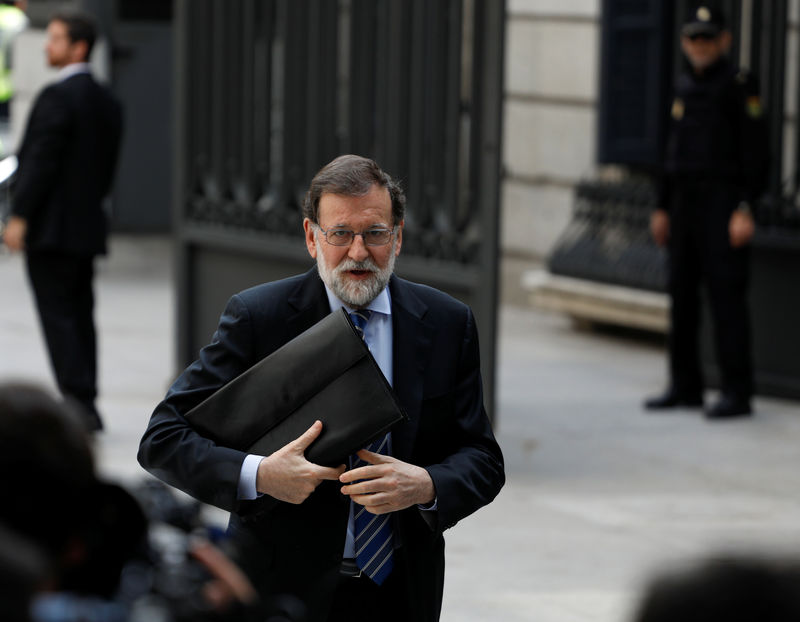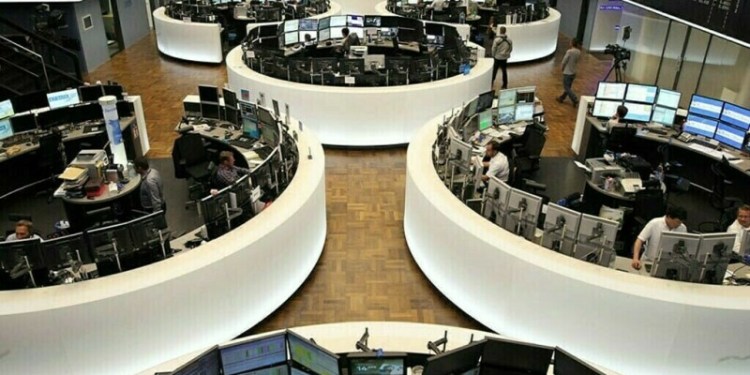 © Reuters. Spain’s Prime Minister Mariano Rajoy arrives to attend a 2018 budget plenary session at Parliament in Madrid
© Reuters. Spain’s Prime Minister Mariano Rajoy arrives to attend a 2018 budget plenary session at Parliament in MadridLONDON (Reuters) – Spain’s borrowing costs climbed while stocks fell sharply on Friday after a no confidence motion was mooted against Prime Minister Mariano Rajoy.
Spanish 10-year government bond yields rose 8 basis points to 1.47 percent, and were set for their biggest daily rise in over three months. ()
Spain’s 5-year credit default swaps climbed to their highest level since the end of October, at 65 basis points, up 4 basis points on the day, IHS Markit.
Spain’s socialist leader Pedro Sanchez on Friday said he would call a snap election if his party was to win the no confidence vote it put forward against the prime minister over a graft case involving members of his People’s Party.
The Ciudadanos party earlier said it was ready to put forward its own motion of no confidence against Rajoy.
The main stock index () extended earlier losses, falling to its lowest level in more than a month, down 2 percent.
Bank stocks were the worst hit, with Santander (MC:), Caixabank (MC:) and BBVA (MC:) tumbling 3.1 to 4.3 percent.
“Up until now, if you put Catalonia to one side, it was a relatively benign environment,” said Pierre Bose, head of European strategy at Credit Suisse (SIX:). He said he remained positive on Spanish equities.
“This increases the level of noise, but does it change the earnings pattern at this point? Not really.”
The sudden increase in political risk in Spain comes as investors’ focus is firmly on the new government in Italy.
“Italy is still the front and center of focus for financial markets at the moment. Spanish news generally plays into the overall theme but we are a long way from those concerns hitting the macro fundamentals for now,” said Lee Hardman, an FX strategist at MUFG in London.
Fusion Media or anyone involved with Fusion Media will not accept any liability for loss or damage as a result of reliance on the information including data, quotes, charts and buy/sell signals contained within this website. Please be fully informed regarding the risks and costs associated with trading the financial markets, it is one of the riskiest investment forms possible.
Source: Investing.com




























